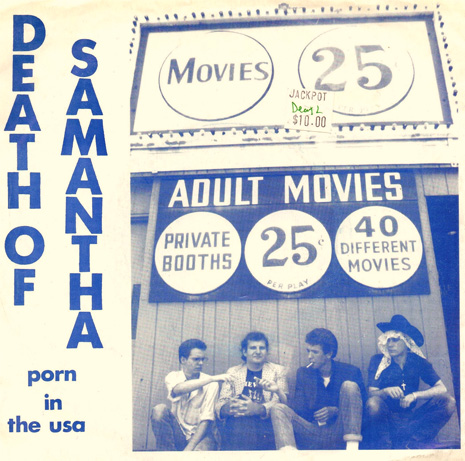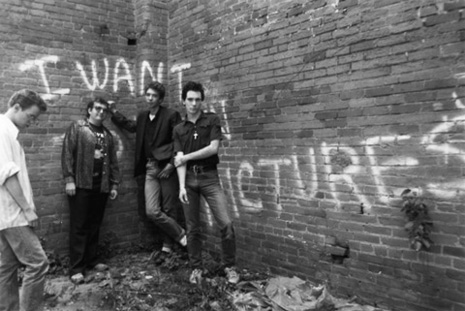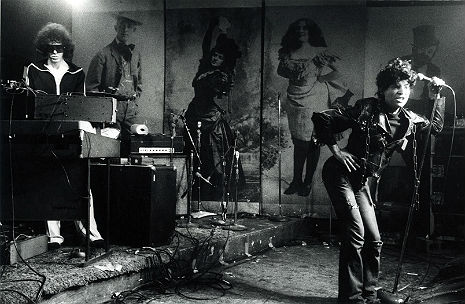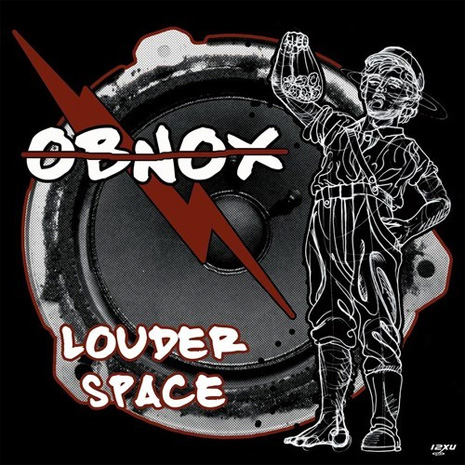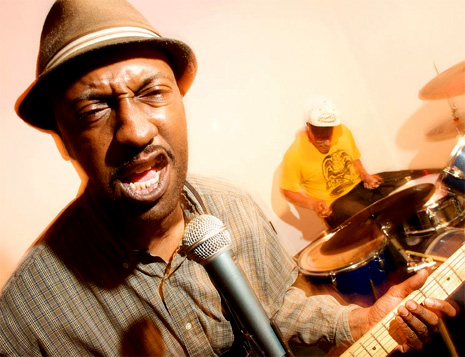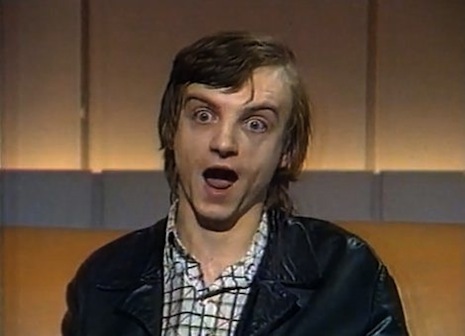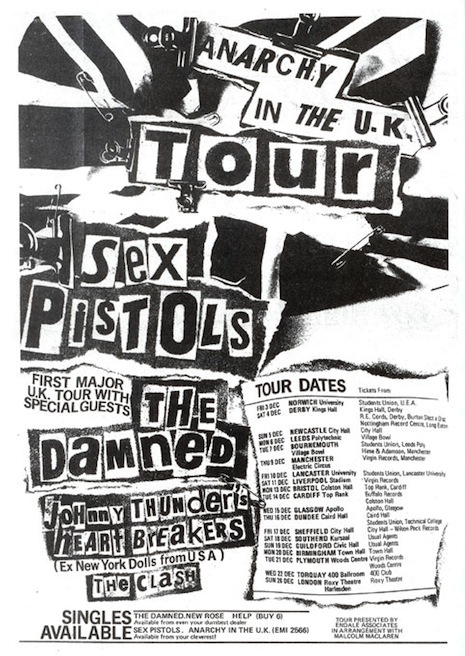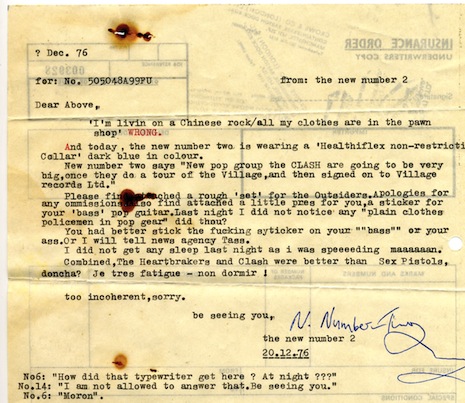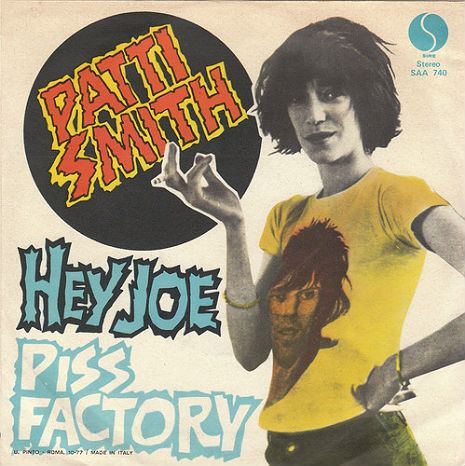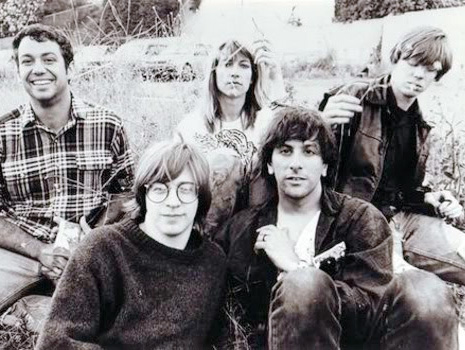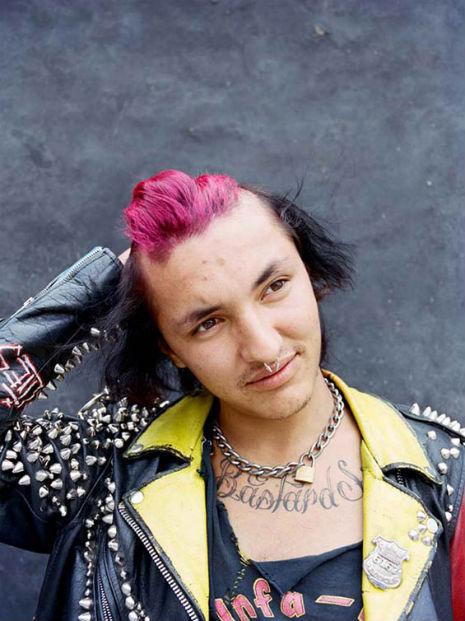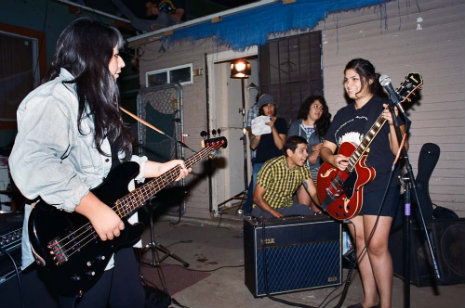
The Butthole Surfers show at Danceteria in early 1986 has become the stuff of legend, but as is often the case, “legends” can be imperfect and are often reported on by someone not even born when the event in question transpired or by someone who didn’t bother to even check a single source other than Wikipedia.
Here’s Gibby’s version, as told to Option Magazine in 1993:
At the legendary Danceteria in New York during the early days of the Butthole Surfers, Gibby got caught drinking and tripping with his pants down. “Ten minutes into the show, I’d put on ten dresses - you see, I used to put dresses on and then tear ‘em all off,” he explains. “But I’d gotten so trippin’ and so drunk. I forgot to put on my underwear. So I got down to my last dress” - he pauses for a well timed hiccup - “and, goddamn it, I was naked. “I looked over at [band members] Cabbage and Kathleen: Cabbage had come out from behind the drums and she had this Fred Flintstone plastic baseball bat filled with urine and was sprinkling it on the crowd. Kathleen was totally naked and bald. And all of a sudden it became like this sexual thing, and there I was with a semi-erect penis onstage, in between this girl’s legs, and about to do this thing. Then it kinda suddenly dawned on me what was going on and I was like, Whoa!”
After the show, the mentally and physically impaired Gibby caused some more trouble. “They tried to pay me and I tore up the check and threw it at the guy,” he says. “And I almost got in a fight with this gigantic doorman who would’ve just thumped me.” He pauses for a well-timed sheesh. “There’s just so many of those kinda things. “But really,” he adds, like a surgeon general, “before anybody goes out and takes a bunch of psychedelic drugs, they should first go and visit Roky Erickson down in Texas. He’s a casualty. That can happen, too, you know.”

Guitarist Paul Leary told the tale this way to the Phoenix New Times in 1991
The frenzied peak of this touring period came during a gig at New York’s Danceteria club in 1986. The show started out predictably enough. Lead singer-guitarist Gibby Haynes—with economy-size bottle of lighter fluid in hand—was up to his usual pyrotechnics. But then the onstage shenanigans got out of hand—even by Butthole standards.
“I walked around with a screwdriver and started playing samurai with every single speaker,” Leary says without a note of either pride or regret. “And then Cabbage, our drummer at the time, and our dancer Kathleen were taking turns peeing into the tiny hole at the end of this plastic Fred Flintstone baseball bat. They filled it with piss and were shaking it around everywhere.”
By the end of the gig, almost all of the Buttholes were naked, including Gibby and Kathleen, who were fornicating at the foot of the stage with the casualness of X-rated movie actors. Maybe more went on, says Leary, but time—and over consumption of acid—has blurred his memory of many of these seamier shows.
In Paul Young’s book L.A. Exposed: Strange Myths and Curious Legends in the City of Angels, it’s said that Haynes was copulating with a female audience member. Kathleen Lynch, says that no actual fornicating took place. She ought to know (but the video evidence seems less certain…)
Then again, there is Kramer’s account, as told via his pal Macioce in Michael Azerrad’s book, Our Band Could Be Your Life: Scenes from the American Indie Underground 1981-1991. He was playing bass onstage that night:
In early ‘86 they drove from Los Angeles all the way to New York just to play two lucrative weekend shows at the Danceteria club, only to arrive to find that the second night had been canceled. The band was livid; Haynes got quite drunk just before show time. “During that show it was just complete bedlam,” says Leary, a man who knows from bedlam. After only a song or two, Haynes picked up a beer bottle and viciously smashed Leary over the head with it. Leary’s eyes rolled back in his head as he crumpled on the floor. Then he quickly got up and resumed playing. It was a stunt bottle, made out of sugar. Then Haynes picked up a real bottle and heaved it the length of the room, where it exploded above the exit sign. Soon Haynes had set fire to a pile of trash in the middle of the stage. “And you’re really thinking, ‘Should I get out of here?’” says Michael Macioce. “That was the type of feeling you had - you were* in danger* at one of their shows.”
Then Lynch jumped onto the stage from the audience and began dancing. Macioce then left - it was about three in the morning by this point - but he called his friend Kramer the next day to see how the rest of the gig had gone. “That girl, she pulled down her pants and Gibby started sticking his thumb up her ass!” Kramer told Macioce. He was fucking her with his thumb just back and forth and this went on for like a half hour or forty-five minutes, just like that!” And that was only the beginning. The band had played only five shambolic songs before Leary leaned his guitar against his amplifier, producing ear-splitting feedback; the strobes were flickering, sirens were flashing, the films were rolling, and through the dry-ice fog a couple of open fires burned brightly. “Gibby filled up a plastic whiffleball bat full of urine - he managed to pee in the little hole in the end of the bat,” says Leary, “and made this ‘piss wand.’” Haynes then began swinging the bat, spraying urine all over the crowd. But it didn’t stop there - Lynch, now completely naked, lay down on the stage and Haynes, in Leary’s words, started “mounting’ her. Later Leary saw video footage of the scene. “Her legs are up in the air and there’s Gibby’s pumping butt in the strobe lights and the smoke,” says Leary, chuckling. “it’s really fuckin’ hideous, man.”
In the midst of the chaos, Leary went around discreetly poking screwdriver holes in every PA and monitor speaker in the place. After the show there was a tense confrontation between the Danceteria management and the band. The Buttholes got paid, but they literally walked out of the place backward as the club’s hired goons not so subtly showed them the door. “You’ll never play New York again!” the club’s manager screamed after them. “And we were playing CBGB within two weeks,” Leary crows, “*for more money!”
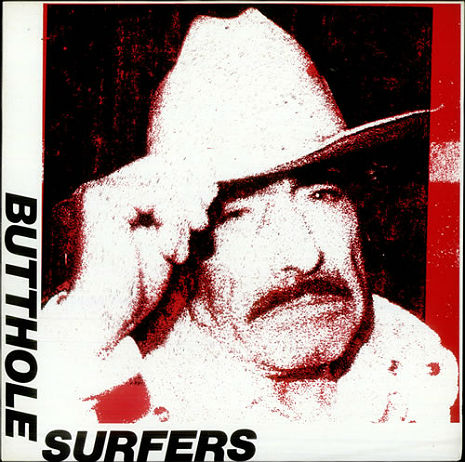
Someone on the Internet named JoJo Jones writes:
at danceteria, gibby came out in a bloody dress with a pregnant belly that soon exploded and cockroach confetti sprayed everyone…then he had sex right on stage in the fog with some buxom lass…then get up and ranted on the bullhorn then went back down in the fog…totally nude…blood and roaches. Anyone who says these were not one of the most amazing live shows really knows nothing about the infamous late 80’s nyc shows. There is more to a “show” than music my friend. Danceteria had some license problems after word got out about the live sex. They were soon banned by many clubs and had bouncers all over them at the Cat Club show.
I was actually at this gig myself, but more or less by accident. I wasn’t there to see The Butthole Surfers—I had never heard of them—Danceteria was just where I hung out at that age, so I happened to be there. At a certain point during their set, the buzz about the (literally) balls out lysergic Dionysian insanity that was going on the first floor of the club started to climb the steps and I went down to check it out. My memory of this gig is that Gibby Haynes had his feet and calves up to the knees covered in clay like he was a tree with roots going into the floor and that he was naked otherwise. Maybe he was standing in a potato sack?
Or maybe not. It would appear that my own standing-in-the-audience memory is a faulty one, too, but apparently no more faulty than the conflicting reports and the Rashomon-ish variations in the tale as told by band members themselves and people who, like me, were there that night
I was at the Cat Club show, JoJo mentions, too and it was equally demonic. I saw the Butthole Surfers many, many times in their heyday. The first time was this Danceteria gig. For several years, the era when the drugs were still working for them, rather than against them, the Butthole Surfers were the most fearsome live act in rock, bar none. Their NYC shows were the sort of events you had your drugs sorted out for well in advance!

Here’s Gibby Haynes telling the story again in 2011:
Ah, there are so many, but one of them was that we were playing in the Danceteria, one of the first of the big shows in New York here, and we went on about 4 o’clock in the morning and we were waaaaasted! The first band had played for about 3 fucking hours and we were ready to play at midnight man! So we had just kept drinking the hard stuff, oh man, we were wasted, and we went on stage and we immediately just took off all of our clothes and just started making noise! I tried to burn one of our amps and it wouldn’t stop working, it was just burning! And I tried to kick it with a bare foot and stubbed my toe! I was totally naked and I remember looking over at Paul was behind the drum kit without any clothes on with 2 drum sticks playing with his dick!
And then I started dancing with Kathleen our dancer and I grabbed her and was like humping her between her legs, and then my dick started to get hard and I was like “whoah this shouldn’t happen!”, so I put her down, and she was like “whoah!” and I walked back to my gear to fuck around with the delays or something and I looked up and there was this guy with a 16mm camera filming this and he was freaking out, and when I was walking towards the camera, my dick was sooo big, I looked like a God! (haha!) That was a crazy night!
Indeed it was, no matter how few brain cells any of us who were there that night have left…
Another account from SPIN, 1990.
Below, you can see a bit of the Butthole Surfers at Danceteria in Jem Cohen’s short film “Witness,” which was also shot in Texas and in San Francisco. Be warned, at the 8:15 mark it might get a little uncomfortable if you’re watching this at work… (Part II is here).
Thank you kindly, Ken!

in 2000, and as such, has merited a page on allmovie, from whence:







